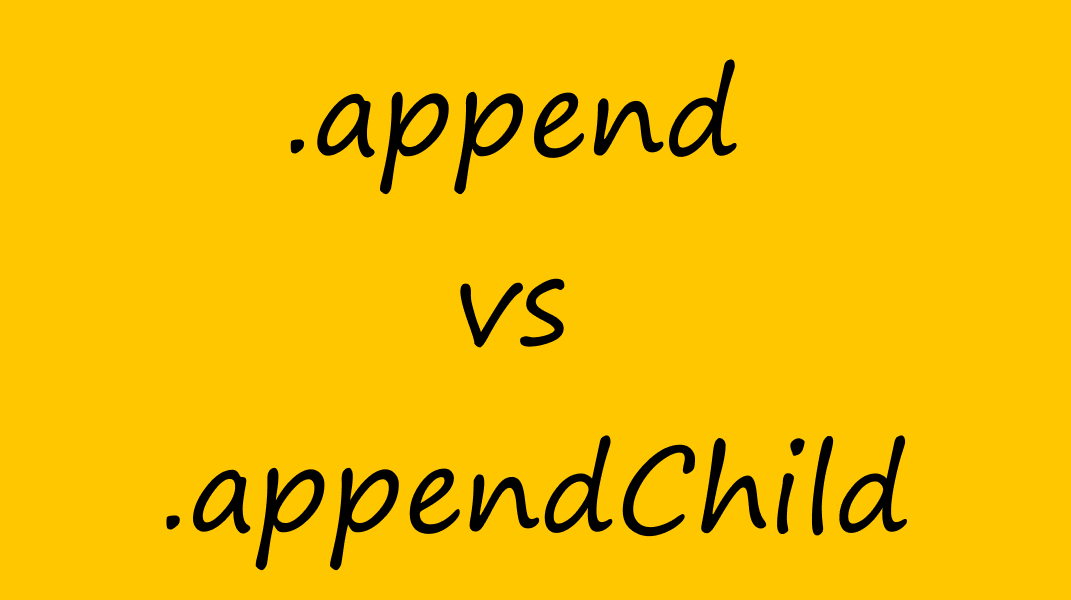.append vs .appendChild
This post covers the basic differences between the append and appendChild method, where, and when to use them.

This is the first post in the this vs that series. A series aimed at comparing two often confusing terms, methods, objects, definition or anything frontend related.
append and appendChild are two popular methods used to add elements into the Document Object Model(DOM). They are often used interchangeably without much troubles, but if they are the same, then why not scrape one....Well they are only similar, but different. Here's how:
.append()
This method is used to add an element in form of a Node object or a DOMString (basically means text). Here's how that would work.
// Inserting a Node object
const parent = document.createElement('div');
const child = document.createElement('p');
parent.append(child);
// This appends the child element to the div element
// The div would then look like this <div><p></p></div>// Inserting a DOMString
const parent = document.createElement('div');
parent.append('Appending Text');
// The div would then look like this <div>Appending Text</div>.appendChild()
Similar to the .append method, this method is used to elements in the DOM, but in this case, only accepts a Node object.
// Inserting a Node object
const parent = document.createElement('div');
const child = document.createElement('p');
parent.appendChild(child);
// This appends the child element to the div element
// The div would then look like this <div><p></p></div>// Inserting a DOMString
const parent = document.createElement('div');
parent.appendChild('Appending Text');
// Uncaught TypeError: Failed to execute 'appendChild' on 'Node': parameter 1 is not of type 'Node'Differences
-
.appendaccepts Node objects and DOMStrings while.appendChildaccepts only Node objectsconst parent = document.createElement('div'); const child = document.createElement('p'); // Appending Node Objects parent.append(child) // Works fine parent.appendChild(child) // Works fine // Appending DOMStrings parent.append('Hello world') // Works fine parent.appendChild('Hello world') // Throws error -
.appenddoes not have a return value while.appendChildreturns the appended Node objectconst parent = document.createElement('div'); const child = document.createElement('p'); const appendValue = parent.append(child); console.log(appendValue) // undefined const appendChildValue = parent.appendChild(child); console.log(appendChildValue) // <p><p> -
.appendallows you to add multiple items whileappendChildallows only a single itemconst parent = document.createElement('div'); const child = document.createElement('p'); const childTwo = document.createElement('p'); parent.append(child, childTwo, 'Hello world'); // Works fine parent.appendChild(child, childTwo, 'Hello world'); // Works fine, but adds the first element and ignores the rest
Conclusion
In cases where you can use .appendChild, you can use .append but not vice versa.
That's all for now, if there are any terms that you need me to shed more light on, you can add them in the comments section or you can reach me on twitter

